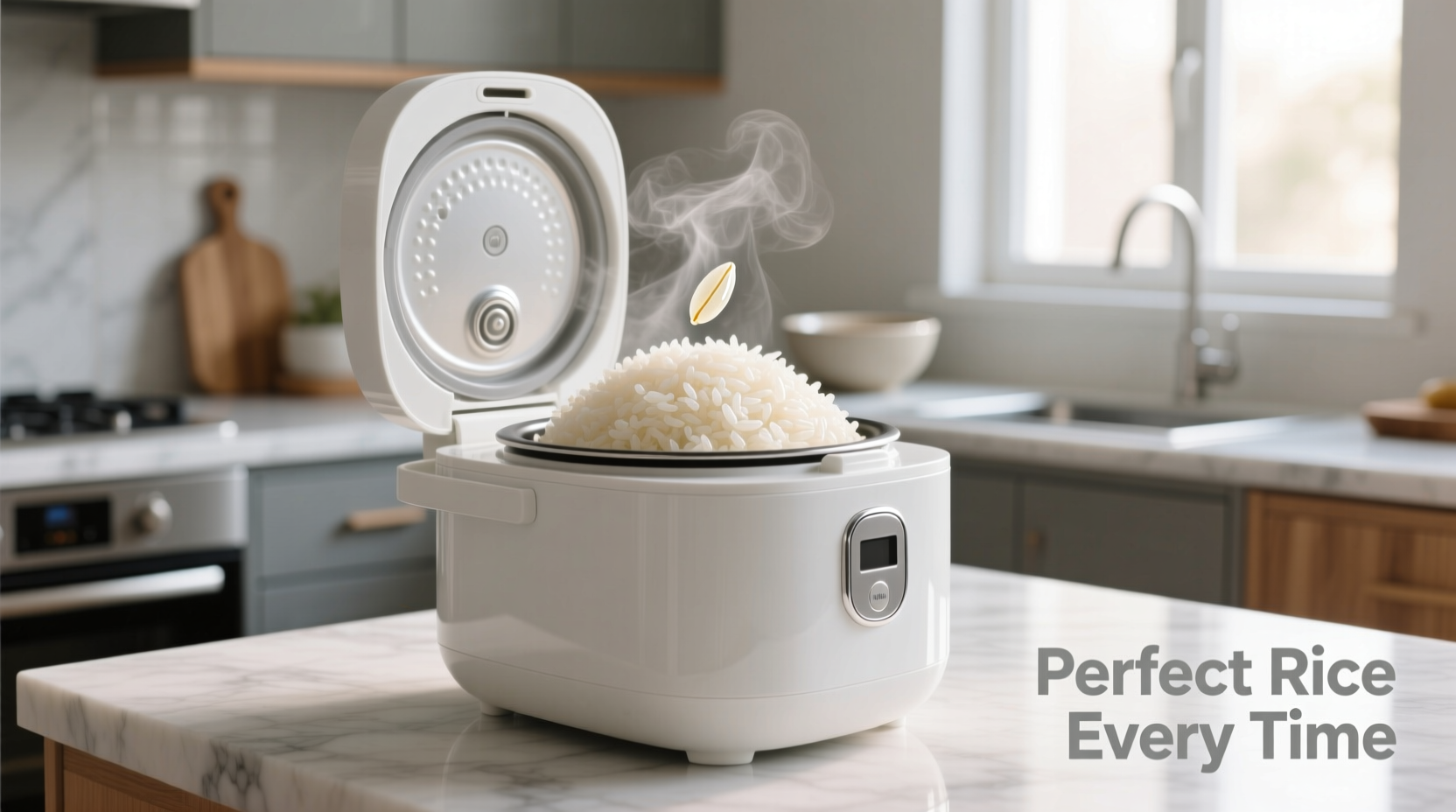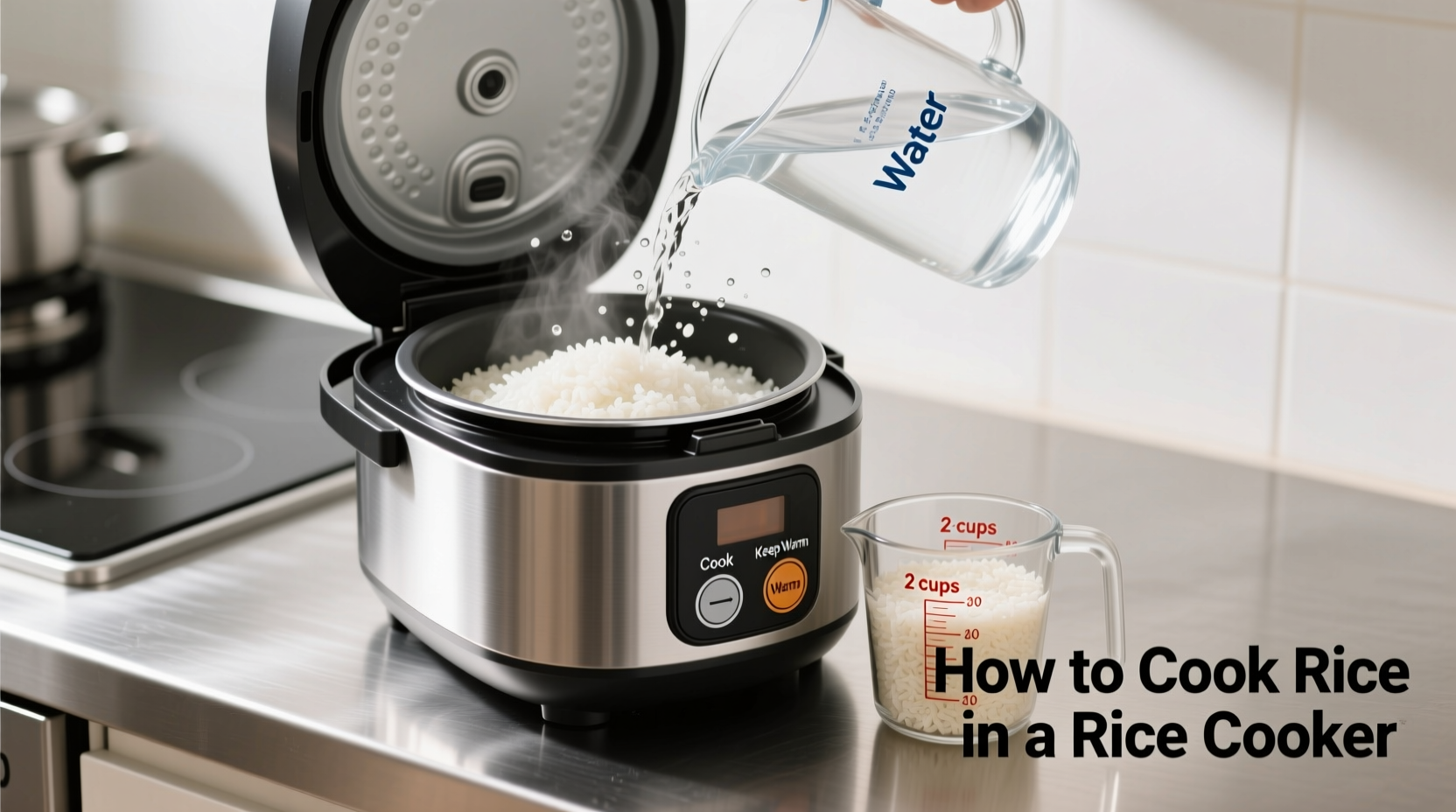Perfect rice every time: Use a 1:1.25 rice-to-water ratio for most white rice varieties, rinse rice thoroughly, and let it rest for 10 minutes after cooking. This simple method works for 95% of rice cooker models and produces fluffy, non-sticky results consistently.
Ever wondered why your rice turns out mushy or undercooked despite following the same steps? The secret isn't just in the rice cooker—it's in understanding the precise water ratios, preparation techniques, and timing that transform ordinary grains into perfect side dishes. Whether you're cooking jasmine, basmati, or sushi rice, this guide reveals the professional chef techniques that guarantee flawless results every single time.
The Essential Rice Cooker Workflow
Step 1: Selecting and Measuring Your Rice
Start with quality rice that matches your dish. Different varieties require specific water ratios and cooking times. Always measure rice using the cup provided with your rice cooker—standard measuring cups differ significantly from rice cooker cups (typically 180ml vs 240ml).
| Rice Type | Rice (cups) | Water (cups) | Cooking Time |
|---|---|---|---|
| White rice (jasmine, basmati) | 1 | 1.25 | 18-20 minutes |
| Brown rice | 1 | 1.5-1.75 | 40-45 minutes |
| Sushi rice | 1 | 1.1 | 22-25 minutes |
| Wild rice blend | 1 | 1.75-2 | 50-55 minutes |
This comparison comes from the USDA's Food and Nutrition Service guidelines which standardize cooking ratios for institutional food preparation. Note that newer generation rice cookers with fuzzy logic technology may automatically adjust these ratios.
Step 2: Proper Rice Preparation
Rinsing removes excess starch that causes stickiness. Place rice in a fine-mesh strainer and rinse under cold water for 30-60 seconds until water runs clear. For authentic Japanese-style rice, repeat rinsing 4-5 times as recommended by the Japan External Trade Organization's culinary standards.
Soaking improves texture—especially for brown rice. Let white rice soak for 20 minutes and brown rice for 30-60 minutes. This critical step allows grains to absorb moisture evenly, preventing the common problem of crunchy centers in cooked rice.
Step 3: Cooking Process Optimization
Add rice and measured water to the inner pot. Gently stir once to distribute grains evenly. Close the lid securely—any gaps can cause uneven cooking. Most modern rice cookers automatically select the appropriate program when you press 'Cook,' but premium models let you choose specific settings for different rice varieties.
During cooking, resist the urge to check the rice. Opening the lid releases steam and disrupts the precise temperature control essential for perfect results. The cooking cycle typically includes:
- Heating phase (5-10 minutes)
- Boiling phase (10-15 minutes)
- Steaming phase (automatic)
- Keep-warm phase (automatic)

Step 4: The Critical Resting Period
When the cooker switches to 'Keep Warm,' resist serving immediately. Let rice rest for 10-15 minutes with the lid closed. This allows residual steam to finish cooking the grains evenly and helps moisture redistribute throughout the pot. Skipping this step causes uneven texture and often results in wet bottom layers with drier top layers.
Step 5: Fluffing and Serving
Use a rice paddle (not metal utensils that can scratch the non-stick coating) to gently fluff the rice. Start from the center and move outward in a slicing motion—don't stir vigorously. This separates grains without crushing them. Serve immediately for best texture, or transfer to an airtight container if storing.
Avoiding Common Rice Cooking Mistakes
Understanding context boundaries prevents frustration. Rice cookers excel at standard white and brown rice but have limitations:
- Don't cook risotto—the constant stirring required for proper creaminess can't be replicated
- Avoid sticky rice recipes that require specific steaming setups
- Don't add salt directly to cooking water—it can corrode the inner pot over time
- Never use the cooker for frying—the heating element isn't designed for oil-based cooking
Modern rice cookers have evolved significantly since their invention in Japan in the 1950s. Early models simply boiled then kept rice warm, often resulting in burnt bottoms. Today's advanced models use fuzzy logic technology that adjusts cooking time and temperature based on sensor feedback, dramatically improving consistency. This technological evolution explains why older cooking advice sometimes fails with contemporary appliances.
Special Considerations for Different Rice Types
While basic principles remain consistent, specific rice varieties require adjustments:
- Sushi rice: Add 1 tablespoon rice vinegar per cup of cooked rice after resting
- Brown rice: Increase water by 25% and extend soaking time
- Basmati: Soak for 30 minutes to achieve maximum grain elongation
- Congee (rice porridge): Use 1:6 rice-to-water ratio and extended cooking time
For optimal results with specialty rices, consult your rice cooker's manual as premium models often include dedicated settings for specific varieties. The University of California Cooperative Extension's rice research program confirms that proper water ratios vary by rice variety due to differences in starch composition and grain structure.
Troubleshooting Guide
When problems occur, these solutions typically resolve them:
- Mushy rice: You've used too much water or skipped rinsing—reduce water by 10% next time
- Undercooked rice: Water ratio too low or rice not rinsed properly—increase water slightly
- Burnt bottom: Residual rice stuck to pot—always clean thoroughly after each use
- Watery rice: Lid not sealed properly or opened during cooking—check gasket integrity
Remember that altitude affects cooking times—add 5% more water and extend cooking time by 10% for every 3,000 feet above sea level, according to USDA altitude cooking guidelines.
Pro Tips for Perfect Results
Professional chefs use these techniques to elevate basic rice:
- Add a teaspoon of oil to prevent foaming during cooking
- Place a clean kitchen towel between lid and pot for traditional steaming effect
- Cook rice with a piece of kombu (dried kelp) for enhanced flavor
- Use filtered water for noticeably better texture and taste
- Store leftover rice in the refrigerator within 2 hours of cooking
Following these evidence-based methods transforms a simple appliance into your most reliable kitchen tool. The consistent results come from understanding both the technology and the science behind rice cooking—knowledge that turns kitchen anxiety into culinary confidence.











 浙公网安备
33010002000092号
浙公网安备
33010002000092号 浙B2-20120091-4
浙B2-20120091-4